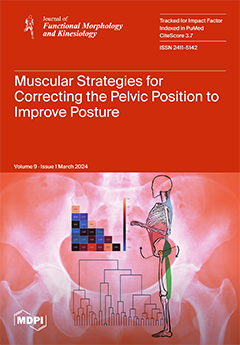Cardiovascular capacity, expressed as maximal oxygen uptake (VO
2max), is a strong predictor of health and fitness and is considered a key measure of physiological function in the healthy adult population. The aim of this study was to investigate the influence of the physical activity levels (PA
level) of participants in the StepTest4all (validated protocol for the estimation of VO
2max in adults). The sample consisted of 69 participants, including 27 women (age 21.7 ± 3.6 years; body mass = 63.5 ± 14.8 kg; height = 1.64 ± 0.06 m; body mass index = 23.7 ± 5.3 kg/m
2) and 42 men (aged 21.7 ± 3.4 years; body mass = 72.0 ± 7.3 kg; height = 1.77 ± 0.07 m; body mass index = 23.1 ± 2.1 kg/m
2). The participants were assigned to one of the two groups: (i) the VO
2max prediction group and (ii) the prediction model validation group. In the multiple linear regression, the following predictors of VO
2max remained significant: sex (
p < 0.001), physical activity level (
p = 0.014), and HRR
60 (
p = 0.020). The prediction equation (R
2 = 74.0%, SEE = 4.78) showed a close and strong relationship between the measurements and can be expressed as follows: VO
2max = 17.105 + 0.260·(HRR
60) + 8.563·(sex) + 4.097·(PA
level), in which HRR
60 is the magnitude of the HR decrease (bpm) in one minute immediately after stopping the step, and sex: men = 1, women = 0, and PA
level is level 1 (low), level 2 (moderate), and level 3 (high). The StepTest4all was shown to be a suitable method for estimating cardiovascular capacity, expressed as VO
2max, in young adults. Retaining PA
level as a significant predictor allows us to better individualize the participants’ VO
2max.
Full article






